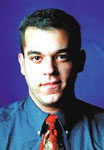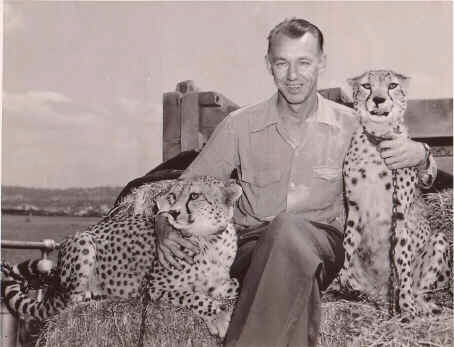
|
Sunday, July
28, 2002
By Sar Perlman
Special
Correspondent
|
A descendent
of the men who started Africa U.S.A., a 300-acre
safari park in the heart of Boca Raton during the
1950’s, has launched a Web site on the
attraction and recently has added more historic
photographs.
Ginger Pedersen, 38, of Boynton Beach launched
the site in January and added the new photos and
information after she contacted the original game
collector who captured the animals. Her
grandfather, John Pedersen, was the park’s
founder and owner, and her father, Jack Pedersen,
managed the park. “When my grandfather died
in 1996 at 98 years old, I inherited his
scrapbook and a box full of old films, and I
scanned everything and created the Web site,”
Pedersen said. “Florida is changing so much.
I think it will help keep the memories alive. The
park is a part of the forgotten history of
Florida.”
Africa U.S.A. was billed as the first cageless
African wildlife tourist attraction in the United
States. It was on land originally homesteaded as
an orange grove by the Raulerson family, of the
original Boca Raton pioneer families. The
property is now the Camino Gardens subdivision.The
park featured such exotic animals as camels,
cheetahs, elephants, gazelles, giraffes,
ostriches, and zebras.
The Web site, www.africa-usa.com, offers a virtual tour of the park,
photos and descriptions of the animals and exotic
plants, aerial photos, clips from the movies
shown at the park and a detailed history of the
park.
In April, Pedersen received an email from an
author writing a biography about Richard Cade,
the big game collector who helped capture the
park’s animals. “When I went through
all the clippings, I saw stories about Richard
but didn’t know how to find him,”
Pedersen said. “I was really excited to get
in touch with him. He now lives in Perth,
Australia, and was totally floored after 50 years
to make contact with Africa U.S.A.” Cade,
the son of a prominent game collector, was only
17 when he went on the expeditions in Africa with
Jack Pedersen. He supplied Ginger Pedersen with
information about the expeditions and gave her
photos she had never seen before, including a
photo of her father with the two cheetahs in
Durban before embarking on the journey back to
Florida. “I didn’t realize how hard it
was to capture the animals at the time and how
difficult it was to get the animals out of
Africa,” she said. Cade’s information
and photos are now posted on the Web site.
|

ON THE WEB: Jack
Pedersen, who managed Africa U.S.A., poses with
two cheetahs in Durban, South Africa, before the
animals were transported to the wildlife
attraction, which closed in 1961.
|
|
“It’s part of history, and I’m
glad they are preserving it,” said George
Gehris, 74. He worked as a guide and later as an
animal caretaker for Africa U.S.A. from 1956
until it closed in 1961 when builders took an
interest in the tract of land. “The park was
a lot of fun, and there are a lot of funny
anecdotes, like giraffes taking visitor’s
straw hats and eating them. Once an eland [a
large cow-like antelope] gored a Jeep through the
front grille and lifted it up with the driver
inside. I was really sad to see the park close.”
Gehris said he used to take the park’s two
famous cheetahs, Mojah and Mbili, to the Popeye
Playhouse in Palm Beach and other venues to put
on shows. “I rode in the back of the open
Jeep with the cheetahs. I wasn’t really
afraid of them-they were trained. But I was
afraid it would rain, because cats don’t
like rain, and it would upset them,” he said.
“I came home with a ripped shirt on several
occasions.”
Pedersen said Camino Gardens is considering
hosting an event next year to commemorate 50
years since the park opened its gates to the
public.
|
|